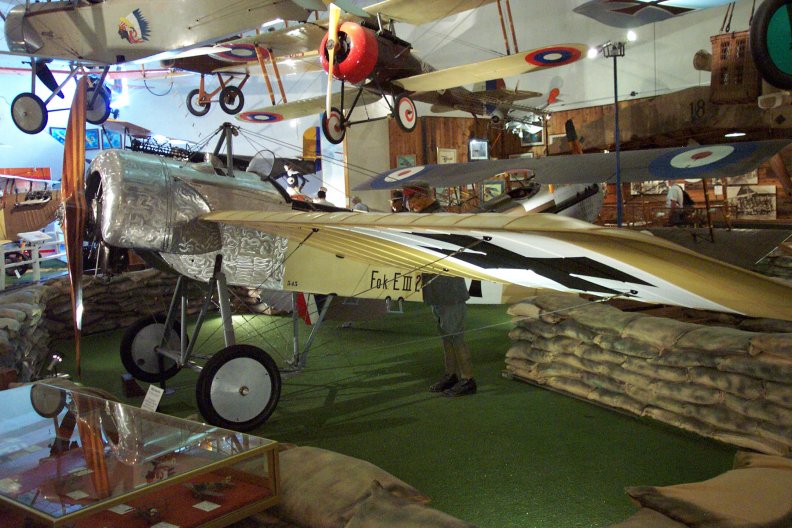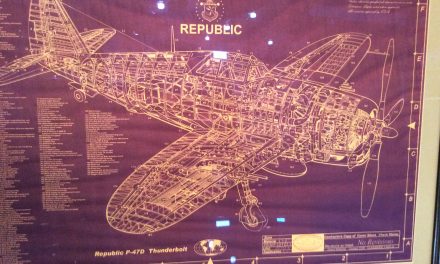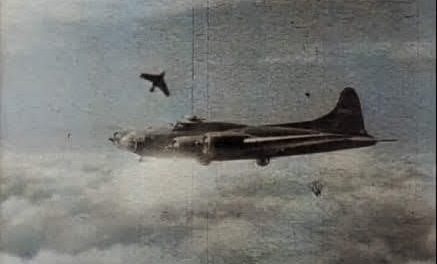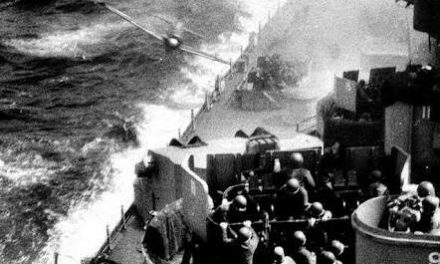
A recent post from my World War One Aircraft collection. I wanted to get “the story” behind the photo. Often, I will visit the web-site that posts the photo to see “what’s going on” about the photo. This time, my investigation paid off nicely!
Originally shared by Pete Panozzo
About the Museum’s
Eindecker E-III
Fokker Eindecker E-III
On the night of February 22, 1978, the old San Diego Aerospace Museum was totally destroyed by fire. There were fifty-five aircraft that were lost that evening, and among these priceless planes was a Fokker Eindecker E-III; a full scale flying reproduction that had been built in 1962 by Jim Appleby. It was impossible to replace all of the aircraft that were lost in 1978, but a few of the more historic examples have been recreated. The museum’s Spirit of St. Louis is one example, and the Fokker Eindecker E-III is another.
The memory of the museum’s first E-III prompted our volunteer craftsmen to undertake the task of replacing this historic aircraft from World War I. The project was started in October 1992, and the objective was to build a flyable reproduction E-III that was as close to the original plance as possible.
The project took a great deal of research before the first piece of metal and wood could be cut and shaped. After five years of dedicated work by many museum volunteers, led by Bob Greenaway, the project was completed. This magnificent reproduction was presented to the public on Members’ Night August 26, 1997.
Dimensions
Wing Span 32 ft. 11 in.
Length 24 ft Weight (loaded) 1,400 lbs
Average Speed 86 mph
Engine
100 hp French built LeRhone
(The original EIIIs were powered
by the German built Oberursels)
The Fokker
Eindecker E-III
Fokker Eindecker E-III
Angry outbursts filled Great Britain’s House of Commons. Members of Parliament were bitterly denouncing the War Office for the slaughter of its young men in the skies over France. This stir, in the summer of 1915, was caused by the appearance of a new German airplane at the front that was shooting down British planes in devastating numbers. The new aerial weapon that had been deployed against the English flyers in France was called the Eindecker, or more commonly, the “Fokker Scourge.”
Anthony Fokker had designed a simple interrupter gear; a mechanism which enabled the pilot to fire his machine gun through the propeller blades without striking them. The German air service installed these interrupter gears on the Fokker Eindecker series and their success was immediate. In the hands of aggressive pilots it was soon shooting down the slower, less maneuverable Allied Fighters. In fact, the first true fighter pilots emerged with the introduction of the Eindecker series of single seat aircraft, and for a relatively brief period in 1915-1916 the Eindecker reigned supreme. The Eindecker E series in the hands of skilled German pilots like Max Immelmann were to radically change the concept of war in the air.
There were 110 Eindecker E-IIIs powered by 100hp Oberursels at the front by the end of April 1916. However, with the arrival of technically superior Allied biplanes like the Nieuport 11 and the DH-2 the Eindecker monoplanes were soon outclassed, and their heyday was short lived; but in their place the Germans introduced the Albatros, the Fokker DR-1, and the Halberstadt fighter biplanes and triplanes, and the dominance of the air war over France continued to see-saw back and forth until the end of the conflict in 1918.
See more at: http://www.letsgoseeit.com/index/county/sd/san_diego/loc11/wwi/eindecker/eindecker.htm





Recent Comments